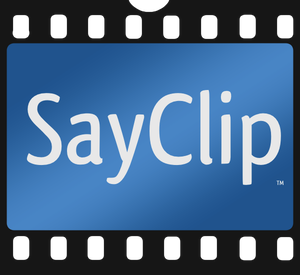 Thanks to a plethora of startups and services (and SXSW), text messaging and group messaging is becoming faster, cheaper, and more and more like instant messaging every day. But what about MMS, and more specifically video messaging — the oft-forgotten cousin of SMS? Many services today offer robust, free SMS functionality, which generally includes the ability to send images, but these apps tend to draw the line at video messaging.
Thanks to a plethora of startups and services (and SXSW), text messaging and group messaging is becoming faster, cheaper, and more and more like instant messaging every day. But what about MMS, and more specifically video messaging — the oft-forgotten cousin of SMS? Many services today offer robust, free SMS functionality, which generally includes the ability to send images, but these apps tend to draw the line at video messaging.
Of course, if you’re anything like SayClip Founder and CEO Romil Patel, you may have family or friends overseas, who you don’t get to see everyday. You’d like to stay in touch and share videos to keep them up to date on what you’re doing. Patel was musing on the limitations of video messaging, when a simple question popped into his head: Wouldn’t it be great if he could send family members video messages, and they could respond in a simple way that would encourage the interaction to happen more often — for free? Yes, yes it would.
And thus SayClip was born. Over the last few months, Patel has created an app that will likely appeal to fans of Path — the app that allows private photo-sharing among family and close friends, though Patel says he sees his app more as a “Google Voice for video messaging”. As with with Path, SayClip is geared towards private sharing — functionality that sets it apart from other video messaging tools for mobile.
In creating SayClip, Patel addressed several of the major problems with current video messaging tools: Primarily, the ability to send video messages even if friends and family didn’t have an iPhone or even have the SayClip app. Adding a contact list can be a pain, too, as is the sign up process inherent in many video messaging tools — it’s just one more password to remember.
Thus, SayClip is a private platform for the web, iOS, and Android, where users can privately send video messages to their friends and family — all facilitated by Facebook Connect. If a friend doesn’t have the SayClip app, they are notified on Facebook that they have a new video message (which they can then view) brought to them by SayClip. (Facebook push notifications are coming shortly, according to Patel.) Or if a user doesn’t have an iPhone, they can use the Web platform — or the Android app. This, in particular, addresses the “Why not just use FaceTime?” question). And, since you likely connect with your closest friends and family on Facebook, your Facebook contact list is imported automatically when you download SayClip.
When any new sharing or messaging platform arises, the first people who sign up often encounter often find themselves just talking to (and amongst) themselves. Facebook integration and web plus mobile offerings avoid this early usage phenomenon, which I know to be a big deterrent among people who are on the fence over whether or not they should sign up for yet another new platform.
Oh, and of course, SayClip users can also message more than one person at the same time to engage the now famous so-called “group messaging”. All in all, SayClip offers some cool features, and I think it goes a long way towards solving cross-platform and cross-device barriers to entry.
SayClip is now only a few weeks old (having launched last week), so there is still some room for improvements in design and functionality, but my main concern is that video messaging is simply not as popular as text and image messaging. Part of the problem is that many of the great SMS apps out there don’t integrate video functionality — likely for good reasons. There doesn’t seem to be as much of a demand there, and what’s more video messaging (and files) are bulkier and tend to be more expensive to send. People also tend to stick to email or Facebook when sharing videos, or go to Skype or FaceTime for realtime video conversation.
Of course, with an easy, free, and cross-platform solution, we may see video messaging become more of a fixture and, seeing as Patel says that SayClip has already expanded into 43 countries in a relatively short period of time, there seems to be cause for optimism.